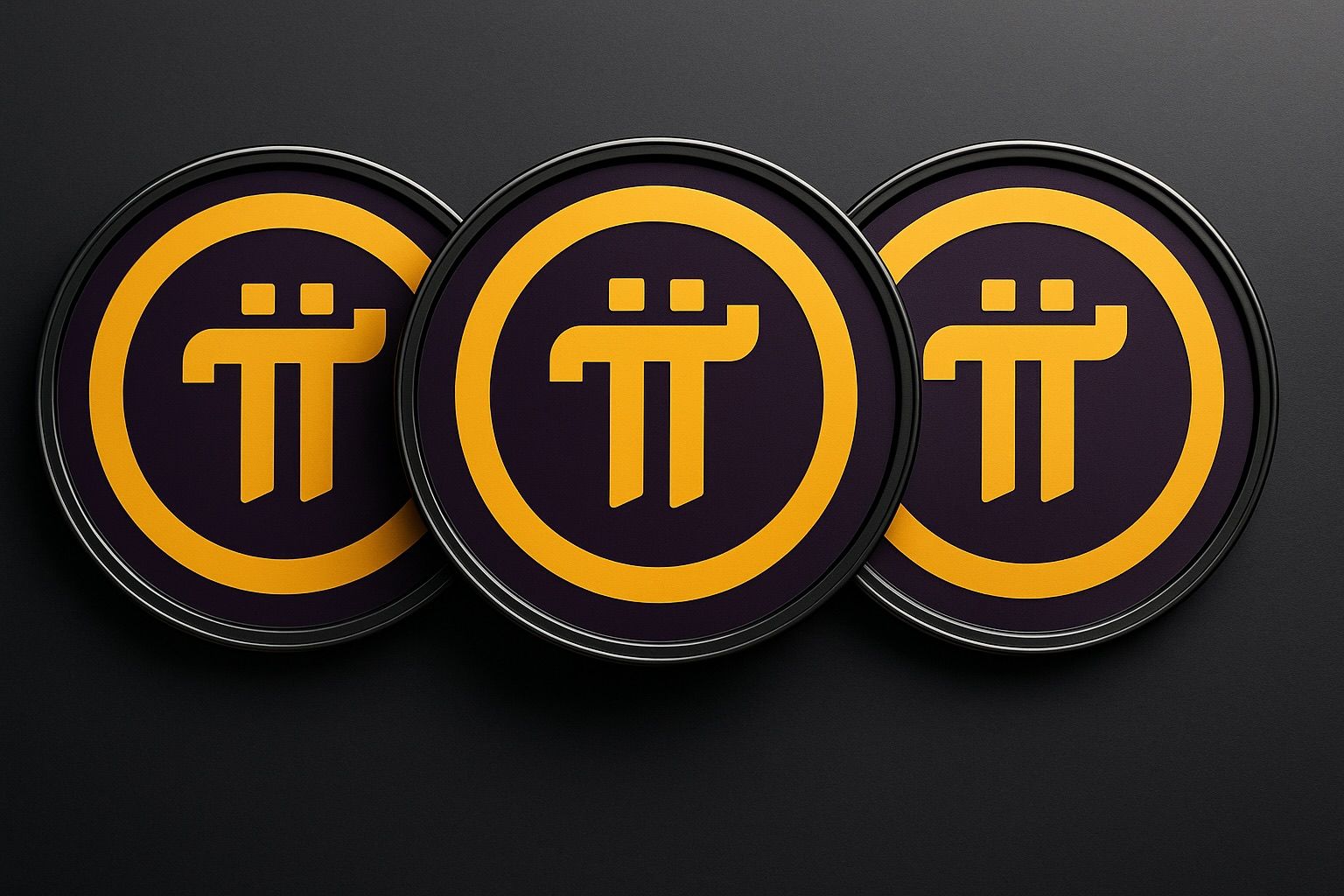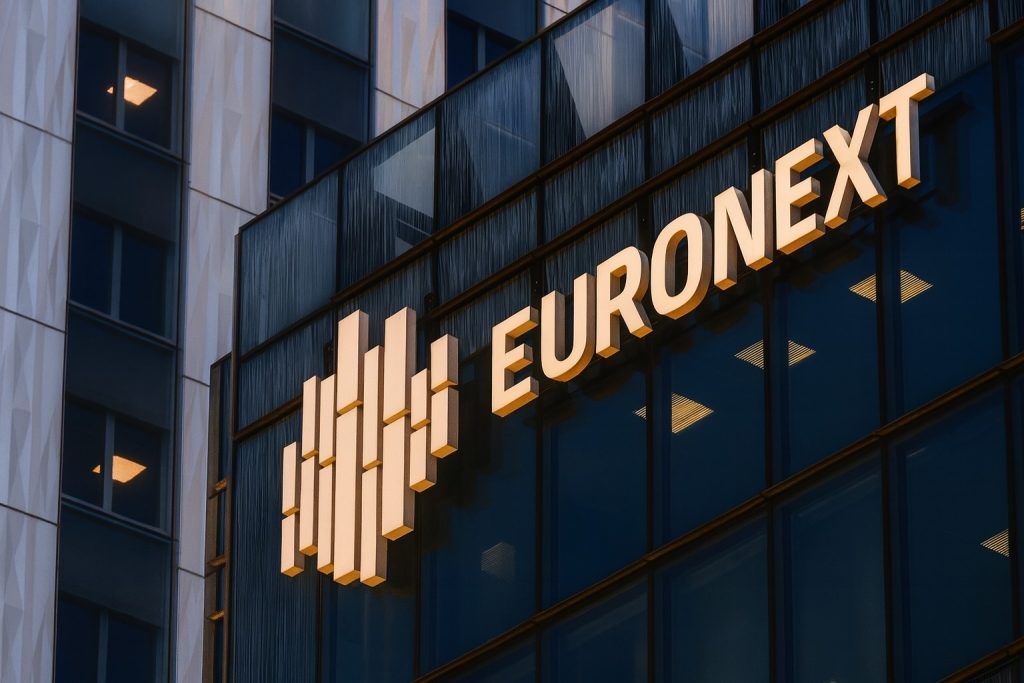- Steep Crash & Partial Rebound: Pi Network’s PI token plunged from nearly $3 in early 2025 to an all-time low around $0.15 in October, erasing roughly $17 billion in market cap [1]. It has since rebounded about 60%, hovering in the mid-$0.20s (around $0.24–$0.25) in recent days [2].
- Rumor and Reality – ISO 20022 Compliance: A community rumor that Pi would soon achieve ISO 20022 financial messaging compliance fueled a price rally last week. However, a Pi Network moderator dismissed this as “misinformation,” urging users not to treat speculation as fact [3]. Social media buzz about Pi has dropped sharply since the rumor was debunked [4].
- Mixed Price Predictions: Technical analysts are divided on Pi’s next move. One analyst sees bullish signs – PI breaking out of a months-long falling wedge pattern – and predicts a potential rally toward ~$0.50 in coming weeks [5]. On the other hand, downside risks remain: after repeated failures to break above its 50-day moving average, PI could revisit support around $0.19 or even $0.15 if selling pressure returns [6].
- Massive Community & Payment Ambitions: Pi boasts over 70 million active “miners” on its mobile app (with 25 million KYC-verified users) [7] – a huge community that the project hopes to leverage for real-world utility. Pi’s core team is working toward integrating with traditional banking standards (ISO 20022) to enable seamless cross-border payments, aiming to join the likes of Ripple (XRP) and Stellar (XLM) as an interoperable payments network [8] [9].
- Improving Fundamentals (and Challenges): Developers have started addressing prior criticisms – rolling out a new KYC process that verified millions, deploying a $100 million ecosystem fund (with a first investment in AI startup OpenMind) to build Pi’s utility [10] [11]. They are also testing a Pi DEX (decentralized exchange) and other apps. Key challenges remain, though: Pi’s enclosed mainnet and unlisted status on major exchanges limit liquidity [12], and its huge token supply (~100 billion max) raises inflation concerns [13]. The next few months – including a planned November 22, 2025 integration milestone – will be crucial for Pi Network’s adoption and price trajectory [14].
Pi’s Price Plunge and Recent Sideways Trade
Launched with enormous buzz, Pi Network’s coin saw a spectacular rise and fall. After peaking near $3 earlier this year, PI entered a steady downtrend amid skepticism about its limited exchange listings and uncertain utility [15]. By mid-October, it hit rock-bottom around $0.1515–$0.1540 [16], transforming Pi into “one of the top fallen angels in crypto” according to analysts [17]. This collapse wiped out billions in value and highlighted concerns from oversupply (large token unlocks) to lack of transparency and centralization issues in the project [18].
Late October brought a spark of relief. Pi’s price staged a rebound of over 20–25%, briefly trading up to ~$0.29 [19] [20]. The turnaround coincided with positive developments: about 2.7 million users migrated to Pi’s mainnet in a week, lifting the total verified user base to nearly 7 million [21]. Trading volume spiked over 1,000%, and PI broke above the upper trendline of a long-standing falling wedge pattern – a bullish technical signal [22] [23]. By early November, however, momentum stalled. PI has been trading flat around $0.24–$0.25 for several days [24], giving back some gains from its late-October rally. FXStreet reported the coin was down about 5% on Monday, November 3, amid fading buying pressure [25]. Despite this pause, Pi is still ~60% higher than its October low [26] and, notably, its weekly loss of ~3–4% is actually less severe than the broader crypto market’s drop (~7–8%) in the same period [27].
Why the sudden boost and stall? A big part of Pi’s late-October excitement came from news and rumors surrounding its potential integration with traditional finance – specifically, the idea that Pi could soon comply with ISO 20022, a global banking standard. This narrative drew speculative buyers and chatter on social media, helping drive the price up. But as discussed next, when officials tempered these rumors, some of the hype – and price momentum – subsided.
ISO 20022 Compliance Rumor: Hype vs. Reality
In the crypto community, Pi Network’s name began trending on speculation that it would achieve ISO 20022 compliance ahead of a key November deadline. ISO 20022 is an international standard for financial messaging used by banks worldwide; if Pi’s blockchain can speak this “common language,” it could enable seamless bank connectivity for Pi transactions. In theory, that means faster, cheaper cross-border payments using Pi, and easier integration into global finance [28]. According to experts, such interoperability could even make Pi a “competitive alternative to traditional currencies” and put it on par with blockchain payment leaders like XRP and Stellar [29].
The excitement was stoked by a November 2 announcement from Lumexo, a Stellar-based wallet provider, claiming that Pi Network was “nearing ISO 20022 compliance” [30]. This seemed to validate the community’s hope that Pi would join the likes of Ripple and Stellar – networks already aligned with ISO standards – by November 22, 2025, when the world’s banks finish migrating to ISO 20022 [31]. Crypto news outlets reported that such a move could “boost [Pi’s] credibility” with institutions [32] and position Pi alongside compliant networks (Stellar, Ripple) in the cross-border payments arena [33]. PI’s price jumped amid this chatter, rising over 7% in 24 hours at one point [34], and social media buzz among “Pioneers” (Pi users) spiked.
However, the official response poured cold water on premature celebration. A moderator of Pi Network’s social channels took to X (Twitter) to debunk the rumors. “This misinformation did not come from @PiCoreTeam,” the Pi moderator warned, referring to the ISO compliance claims [35]. He cautioned the community against jumping to conclusions, saying “guessing becomes facts that everyone is repeating” and that “the whole ISO 20022 narrative is based on misunderstandings” [36]. In other words, the core team hadn’t announced anything yet – and observers likely misconstrued what ISO 20022 entails for Pi.
Following the moderator’s remarks, the speculative frenzy cooled. On-chain data showed social media mentions of Pi plummeted – Pi’s social dominance dropped from 0.186% mid-week to just 0.025% by Sunday, with daily social volume collapsing from 36 down to 9 posts [37]. This retreat in chatter was a warning sign that some of the recent buying pressure might fade along with the rumor-driven hype [38]. Indeed, Pi’s price rally stalled almost immediately, suggesting the market was pricing in a reality check.
That said, the ISO 20022 story isn’t over. Even if the specific rumor was unofficial, Pi’s community remains fixated on the November 22 timeline. Notably, Pi’s own team has hinted at this date in its roadmap: crypto press reports that the Pi Core Team outlined three phases – pre-November 2025, the November 22 ISO activation, and a post-launch phase – as part of Pi’s transition to open mainnet and broader adoption [39]. November 22, 2025 is significant globally because it marks the final migration of banks to ISO 20022 messaging [40]. Pi enthusiasts interpret this as a window for Pi to “go live” with bank integrations or even open its network. In a bold assertion, one Pi community publication claimed Pi will “work as an official digital currency in international payments starting November 22, 2025,” potentially ushering in “worldwide recognition” for Pi [41].
Of course, such claims are speculative. The Pi Core Team has not confirmed any ISO activation on that date, and the moderator’s comments suggest caution. It’s possible the truth lies in between: Pi developers may be working toward ISO compliance (the project is built on Stellar’s protocol, which eases compatibility [42]), but any official rollout will be announced on Pi’s terms. For now, investors should temper expectations; as the moderator implied, until Pi’s team issues an official statement, rumors shouldn’t be treated as reality [43]. The market’s reaction shows why – buying on rumor alone can be a risky bet if the news doesn’t materialize as expected.
Technical Outlook: Bearish Reversal or Bullish Breakout?
Pi’s price chart is at a crossroads, and analysts are split on what comes next. Bearish signals have emerged in the short term. FXStreet notes that PI has repeatedly failed to clear its 50-day exponential moving average – a trend line it also bumped against in May, June, and August before each pullback [44]. True to form, last week’s rally once again stalled right around that 50-day EMA (~$0.26), and PI has been trending down since [45] [46]. The concern is that supply from long-time holders or miners overwhelms new demand whenever the price nears that technical level, causing a reversal. Momentum indicators are backing the bears: as PI slid from its recent peak, the daily Relative Strength Index (RSI) fell back to neutral ~50 (after briefly reaching 60+ during the rally), and the MACD indicator’s uptrend flattened, threatening a bearish crossover [47]. These are classic signs of waning buying pressure. If sellers regain control, analysts warn that critical support at approximately $0.1919 (Pi’s October 11 low) could be tested next [48]. A breach of ~$0.19 would turn the charts decisively negative, potentially opening the door to a re-test of the all-time low near $0.153 [49]. In short, cautious voices argue that without a fresh catalyst, Pi may resume its downtrend – with $0.15 as the “last line of defense” for bulls [50].
On the other side, bullish analysts see a silver lining. The recent stabilization above $0.20 and the pattern formed over the past several months give hope that Pi is carving out a bottom. “There are now signs that the token may be preparing for a strong rebound,” writes analyst Crispus Nyaga, pointing to a notable falling wedge pattern on the daily chart [51]. In Pi’s case, since May the price has been making lower highs and lower lows within converging trendlines – classic falling wedge behavior [52]. Volume also declined during this wedge formation, which is typical. Importantly, PI broke above the wedge’s upper boundary in late October when it surged to ~$0.29 [53] [54]. This bullish breakout from a multi-month wedge could mark a trend reversal. Adding to the optimism, oscillators flashed a bullish divergence: while Pi’s price hit new lows in October, its RSI and other strength indices were no longer making new lows, hinting that selling momentum was fading [55]. According to Nyaga, “the most likely Pi Network price forecast is bullish, with the next key level at $0.50” if this reversal holds [56]. In his view, PI could roughly double from current levels, reclaiming the psychologically important $0.50 zone, which served as support back in June/July and now might act as a resistance target. He does caution that any move below $0.1515 (the recent floor) would “invalidate the bullish forecast” and negate the wedge breakout [57].
Other market watchers have slightly more conservative upside targets. For instance, analysts cited by Brave New Coin note that Pi faces an overhead resistance around $0.30–$0.33 – the area of its late-October peak [58] [59]. If bulls can push through that, the next technical target would be near $0.36 [60]. Beyond that, Pi’s August highs around $0.50 would come into play. But first things first: Pi needs to hold above key support and not give back all recent gains. “Failure to maintain the $0.20 floor could trigger short-term corrections,” one analysis warned, especially since momentum indicators like RSI had crept into overbought territory during the rally [61]. Essentially, Pi’s chart has stabilized for now – a base above $0.20 – but it must build enough strength to break the ~$0.30 barrier to confirm a true trend change. Until then, traders should be prepared for range-bound action and volatility in both directions.
Growing Community, Ecosystem Moves, and Outlook
One factor that sets Pi Network apart is its massive community and unconventional mining model. Pi launched in 2019 with a vision of making crypto accessible: users mine Pi coins on their smartphones via a free app, securing the network through social trust rather than energy-intensive hashing. This mobile-first approach has attracted a huge user base – by late 2025, Pi had over 100 million app downloads and an estimated 70+ million active miners worldwide [62] [63]. Of those, ~25 million people have passed Pi’s Know-Your-Customer (KYC) identity verification process [64], which the project requires to enforce its one-person-one-account rule. This astronomical user count gives Pi a global footprint that few cryptocurrencies can match. It’s particularly popular in regions with many unbanked or underbanked populations (Africa, Southeast Asia, Latin America), where the barrier to entry for Pi is low (just a phone) and the prospect of a new digital currency is enticing [65].
Leaning on this community strength, the Pi Core Team has been pushing to convert users into an active economy. A frequent criticism of Pi has been its long “enclosed mainnet” phase – for over a year, Pi’s blockchain has been live but walled off, meaning Pi coins cannot be freely transferred to external wallets or exchanges by most users. This cautious approach (intended to finish KYC and prevent fake accounts from cashing out) also meant that Pi lacked utility and liquidity. PI only trades on a few third-party exchanges as an IOU or placeholder, and major platforms like Binance or Coinbase have stayed on the sidelines. The result: Pi’s valuation suffered due to limited exchange listings and ecosystem activity [66]. As analyst Crispus Nyaga observed, these issues “will likely continue to weigh down on its price” until resolved [67].
The team is aware of the challenges and has begun delivering some long-promised developments:
- KYC & Mainnet Migration: A new AI-assisted KYC system was launched in 2023–2024, and in recent months millions of accounts have been verified and migrated to the Pi mainnet. By October 2025, roughly 7 million users had moved their Pi balances onto the mainnet blockchain (out of 25M KYC’d) [68] [69]. This progress is crucial for eventually opening the network to the public and enabling real Pi transactions outside the app.
- Ecosystem Fund Deployment: Pi set up a $100 million ecosystem fund to invest in projects that build useful apps and services for Pi. In late October, the Pi Core Team announced the fund’s first investment – in a company called OpenMind, which works on AI and robotics [70]. In a proof-of-concept, volunteer Pi node operators even ran AI models for OpenMind, demonstrating how Pi’s distributed network could perform real-world computations for rewards [71]. This was a milestone showing Pi’s potential beyond just payments.
- Utility Apps and DEX: Developers are testing components of the Pi ecosystem like a decentralized exchange (Pi DEX), an automated market maker, and liquidity pools on Pi’s testnet [72]. They also upgraded the Pi App Platform for third-party developers [73]. In the pipeline is Pi’s own app marketplace where users could spend Pi for goods and services, fulfilling the vision of Pi as a “utility token” for everyday transactions [74].
- ISO 20022 & Compliance APIs: Despite the recent rumor controversy, Pi’s roadmap does emphasize regulatory and standards compliance. Pi’s blockchain is built on the Stellar Consensus Protocol, which naturally aligns it with certain financial standards [75]. The team has been developing compliance APIs and exploring integration with the banking system. If and when Pi achieves ISO 20022 compliance, it could vastly improve Pi’s credibility in the eyes of banks and regulators [76]. Being ISO-compliant could signal Pi is “ready to move beyond its experimental phase into a mature ecosystem capable of supporting serious financial operations,” as one report put it [77].
These efforts are aimed at answering the big question: Can Pi Network bridge the gap between crypto and traditional finance? Supporters argue that with its huge user base and user-friendly design, Pi could drive crypto adoption in demographics that Bitcoin or Ethereum haven’t reached. If Pi’s ISO 20022 integration indeed happens, analysts say Pi might serve as a “bridge between traditional banking and crypto systems”, a goal long sought in fintech [78]. This could in turn spur institutional interest and new use cases for the Pi token, potentially lifting its long-term value [79].
However, sober realities remain. Pi’s current price (~$0.24) reflects a market that is still uncertain about the project’s execution. The coin’s supply dynamics are a concern: with a max supply of 100 billion Pi, there is an oversupply overhang – many Pi are yet to be unlocked or distributed, which could dilute value as they come into circulation [80]. Some community members have floated ideas like token burns (destroying a portion of supply) to make Pi more scarce, especially noting how other projects saw price boosts after limiting supply [81]. But there’s no indication the Pi team plans to burn coins, and any such move would be unprecedented for Pi’s economics. Another challenge is exchange listings: Pi’s lack of availability on major exchanges is largely due to its enclosed mainnet status. A *“slim chance” exists that a big exchange could list PI IOUs or futures, which “would boost its price immediately” by exposing it to more buyers [82]. In fact, rumors have swirled that Binance might list Pi around the time of mainnet launch – and even that CoinMarketCap (owned by Binance) could officially track Pi’s price once it’s open. Such speculation has contributed to periods of optimism [83] [84]. But until Pi’s network opens and the coin is freely transferable, top-tier exchanges are likely to wait on the sidelines.
The coming weeks and months are pivotal. Pi Network is approaching what one observer called a “defining chapter” in its story [85]. November 2025’s events – whether Pi flips the switch on ISO 20022 compatibility or even partially opens its mainnet – could drastically shape public perception. The community (“Pioneers”) is palpably excited; Pi’s global grassroots following, from chat groups to hackathons, remains one of its strongest assets [86]. This enthusiasm, however, also sets the stage for potential disappointment if milestones are missed. For now, Pi’s leadership appears to be prioritizing a methodical rollout over rushing to meet an arbitrary date. Honesty and patience from the Core Team, plus steady infrastructure improvements, will be essential, as one crypto editorial noted [87].
In summary, Pi Network finds itself at a turning point. The project has survived a dramatic boom-and-bust in its coin’s value and is striving to turn things around by boosting real utility and aligning with global standards. If the “tide is to turn” for PI coin, as some bulls predict, we will likely see evidence in the form of successful tech upgrades, exchange listings, or increasing usage within Pi’s ecosystem. A sustained break above key price levels (like $0.30, then $0.50) would confirm improving sentiment [88] [89]. Conversely, failure to deliver promised features – or a loss of community trust – could keep Pi trapped in a low-value limbo near its lows. All eyes are on the Pi Core Team as November 22 approaches, to see whether the ambitious talk of connecting Pi to the world’s banking system translates into action. If Pi can pull it off, it may yet justify the years of hype and perhaps chart a course from a niche mobile app project to a recognized player in global digital payments [90] [91]. As ever in crypto, only time – and execution – will tell.
Sources: Recent analysis and news on Pi Network from FXStreet [92] [93] [94] [95], BanklessTimes [96] [97] [98] [99], Coinfomania [100] [101] [102], Brave New Coin [103] [104], and other crypto news reports.
References
1. www.banklesstimes.com, 2. www.banklesstimes.com, 3. www.fxstreet.com, 4. www.fxstreet.com, 5. www.banklesstimes.com, 6. www.fxstreet.com, 7. coinfomania.com, 8. coinfomania.com, 9. coinfomania.com, 10. www.banklesstimes.com, 11. www.banklesstimes.com, 12. www.banklesstimes.com, 13. coinfomania.com, 14. coinfomania.com, 15. www.banklesstimes.com, 16. www.banklesstimes.com, 17. www.banklesstimes.com, 18. www.banklesstimes.com, 19. bravenewcoin.com, 20. bravenewcoin.com, 21. bravenewcoin.com, 22. www.banklesstimes.com, 23. www.banklesstimes.com, 24. www.banklesstimes.com, 25. www.fxstreet.com, 26. www.banklesstimes.com, 27. www.coingecko.com, 28. coinfomania.com, 29. coinfomania.com, 30. www.fxstreet.com, 31. coinfomania.com, 32. coinfomania.com, 33. coinfomania.com, 34. trobits.com, 35. www.fxstreet.com, 36. www.fxstreet.com, 37. www.fxstreet.com, 38. www.fxstreet.com, 39. coinfomania.com, 40. coinfomania.com, 41. coinfomania.com, 42. coinfomania.com, 43. www.fxstreet.com, 44. www.fxstreet.com, 45. www.fxstreet.com, 46. www.fxstreet.com, 47. www.fxstreet.com, 48. www.fxstreet.com, 49. www.fxstreet.com, 50. www.fxstreet.com, 51. www.banklesstimes.com, 52. www.banklesstimes.com, 53. www.banklesstimes.com, 54. www.banklesstimes.com, 55. www.banklesstimes.com, 56. www.banklesstimes.com, 57. www.banklesstimes.com, 58. bravenewcoin.com, 59. bravenewcoin.com, 60. bravenewcoin.com, 61. bravenewcoin.com, 62. coinfomania.com, 63. coinfomania.com, 64. coinfomania.com, 65. coinfomania.com, 66. www.banklesstimes.com, 67. www.banklesstimes.com, 68. bravenewcoin.com, 69. bravenewcoin.com, 70. www.banklesstimes.com, 71. www.banklesstimes.com, 72. www.banklesstimes.com, 73. www.banklesstimes.com, 74. coinfomania.com, 75. coinfomania.com, 76. coinfomania.com, 77. coinfomania.com, 78. bravenewcoin.com, 79. bravenewcoin.com, 80. www.banklesstimes.com, 81. www.banklesstimes.com, 82. www.banklesstimes.com, 83. bravenewcoin.com, 84. bravenewcoin.com, 85. coinfomania.com, 86. coinfomania.com, 87. coinfomania.com, 88. www.banklesstimes.com, 89. bravenewcoin.com, 90. coinfomania.com, 91. coinfomania.com, 92. www.fxstreet.com, 93. www.fxstreet.com, 94. www.fxstreet.com, 95. www.fxstreet.com, 96. www.banklesstimes.com, 97. www.banklesstimes.com, 98. www.banklesstimes.com, 99. www.banklesstimes.com, 100. coinfomania.com, 101. coinfomania.com, 102. coinfomania.com, 103. bravenewcoin.com, 104. bravenewcoin.com










